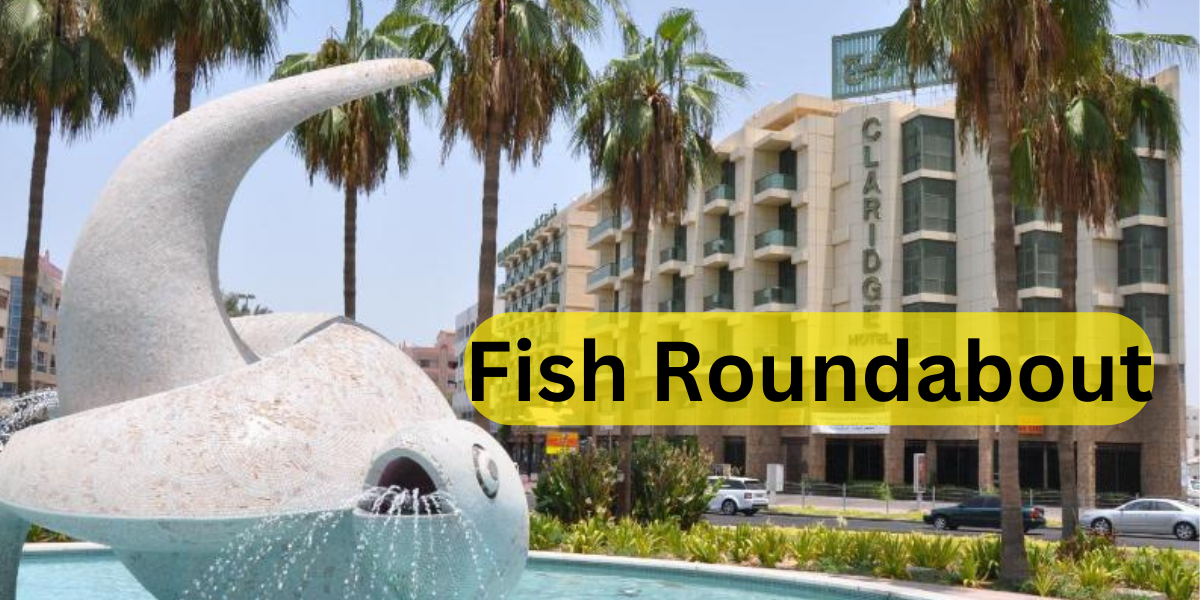Fish Roundabout: A Unique Intersection Celebrating Marine Life

Imagine driving through a bustling city and suddenly coming across a roundabout adorned with fish sculptures. This is precisely what you’ll find at the fascinating “Fish Roundabout.” This one-of-a-kind intersection has captivated locals and visitors alike, adding a touch of whimsy and creativity to the urban landscape. Let’s dive into the story behind the Fish Roundabout and explore why it has become a beloved symbol of the city.
The Origin of the Fish Roundabout
Located at the heart of the city, the Fish Roundabout emerged from a collaborative effort between local artists, urban planners, and city officials. Inspired by the city’s close connection to the sea and its vibrant fishing industry, the roundabout was conceptualized as a way to pay tribute to marine life while enhancing the city’s aesthetics.
Design and Sculptures
The centerpiece of the Fish Roundabout is a magnificent fountain, where a school of beautifully crafted fish sculptures appear to swim gracefully through the air. These sculptures, made from durable materials such as steel and fiberglass, are meticulously designed to capture the intricate details of various fish species. From vibrant tropical fish to majestic marlins, each sculpture showcases the rich diversity of marine life found in the nearby oceans.
Every sculpture within the Fish Roundabout is a testament to the skill and creativity of the local artists involved in the project. They meticulously sculpted and painted each fish, ensuring that the colors and patterns accurately depict the real-life counterparts. The result is a breathtaking display that brings the underwater world to the surface, inviting onlookers to marvel at the beauty and wonder of marine creatures.
Biya fish, also known as Asian sea bass or barramundi, is a species of fish that holds a special place in the culinary world. With its sleek silver body and distinctive pattern of scales, the Biya fish is not only a visual delight but also a treat for the taste buds. This versatile fish can be found in the coastal waters of Southeast Asia and is highly prized for its delicate flavor and firm, white flesh.
The Biya fish has gained popularity due to its ability to adapt to different cooking methods. Whether grilled, steamed, or pan-fried, this fish retains its natural flavor and remains moist and tender. Its mild, yet slightly sweet taste makes it a favorite among seafood enthusiasts, and it pairs well with a variety of seasonings and sauces.
Rich in nutrients, the Biya fish is a healthy choice for those seeking a balanced diet. It is an excellent source of high-quality protein, omega-3 fatty acids, and essential vitamins and minerals. These nutritional benefits contribute to overall well-being, promoting heart health, brain function, and reducing the risk of chronic diseases.
Hamour fish, also known as grouper, is a popular and delicious fish found in the Arabian Gulf region. This species is highly valued for its delicate flavor and firm, white flesh, making it a sought-after choice among seafood enthusiasts.
The hamour fish has a distinctive appearance, with a broad, flattened body and a large mouth, perfect for catching prey. Its coloration varies from dark brown to gray, blending seamlessly with its natural habitat of rocky reefs and coral formations. Renowned for its versatility, the hamour fish can be prepared in numerous ways, including grilling, baking, or frying, each method enhancing its unique taste.
The Hilsa fish, also known as Ilish or Pulasa, is a species of fish that holds a special place in the culinary and cultural traditions of South Asia. It is widely regarded as one of the most sought-after and prized fish varieties in the region. Hilsa fish is predominantly found in the rivers of Bangladesh, India, and Myanmar, with the Ganges and Brahmaputra rivers being its primary habitats.
What sets the Hilsa fish apart is its distinctive taste and flavor, making it a delicacy enjoyed by many seafood enthusiasts. Its flesh is tender, oily, and has a rich, distinct flavor that is truly unique. The fish is silver in color and has a slender, elongated body with sharp, pointed scales. It is highly valued for its soft texture and the way it melts in the mouth when cooked to perfection.
The Hilsa fish is not just known for its culinary excellence but also holds great cultural significance. In Bangladesh, it is considered the national fish and holds a prominent place in their cuisine and cultural celebrations. During the monsoon season, when the Hilsa fish migrates upstream to spawn, it becomes a major part of festivities and feasts.
Impact on the Community
The Fish Roundabout has become a beloved landmark, not only for its aesthetic appeal but also for the sense of pride it instills in the local community. It serves as a symbol of the city’s identity, showcasing its close relationship with the ocean and its commitment to environmental conservation. The roundabout has become a popular spot for tourists to take photos, and it often sparks conversations about marine life and the importance of preserving aquatic ecosystems.
Additionally, the Fish Roundabout has contributed to improving traffic flow and safety in the area. Its unique design and eye-catching sculptures draw drivers’ attention, encouraging them to slow down and navigate the roundabout with care. This subtle reminder to drive responsibly has resulted in a noticeable reduction in traffic accidents in the vicinity, making the area safer for both drivers and pedestrians.
The Fish Roundabout stands as a shining example of how art, creativity, and urban planning can come together to transform a mundane intersection into a captivating work of art. It celebrates the beauty of marine life, instills a sense of community pride, and enhances safety on the roads.
So, the next time you find yourself in this vibrant city, don’t forget to visit the Fish Roundabout. Allow yourself to be enchanted by the sight of fish swimming through the air, and embrace the wonder and creativity that this unique intersection represents. Read More Post Visit.




